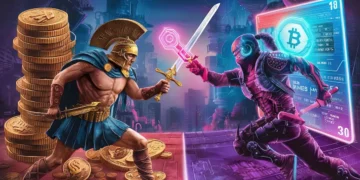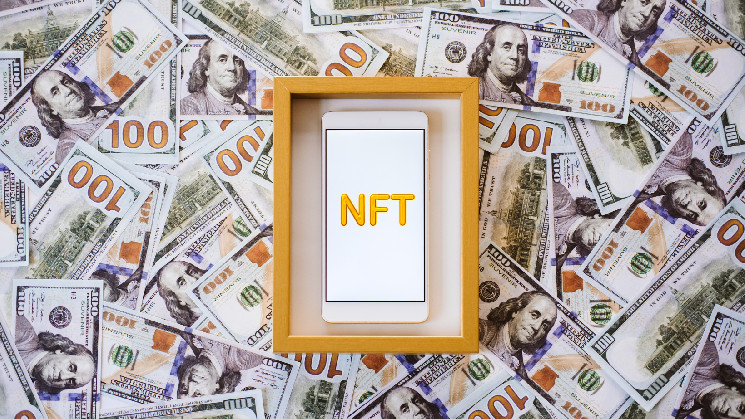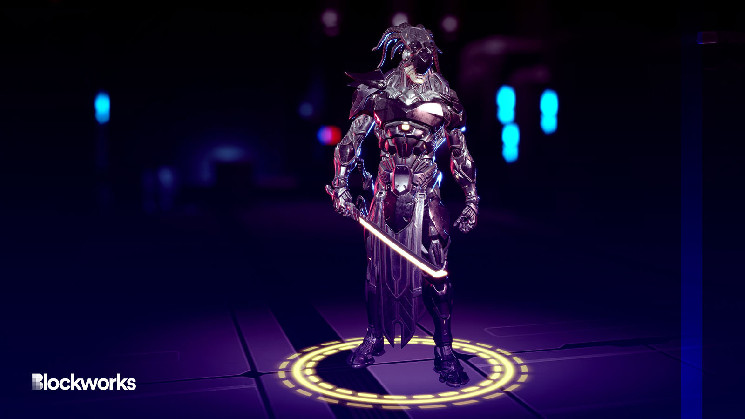Non-fungible tokens (NFTs) took the world by storm in 2021 with patrons spending tens of millions of {dollars} on digital collectibles within the artwork, leisure, music and sports activities industries. As NFTs grew in recognition, the area gained the eye of celebrities like Logan Paul, Justin Bieber and Serena Williams, catapulting digital collectibles into the mainstream. We noticed a brand new technology of collectors, buyers, and followers transfer away from amassing bodily objects like baseball playing cards or Beanie Infants to spending greater than one million {dollars} on a single Bored Ape.
In January 2022, NFTs had been experiencing an all-time excessive buying and selling quantity of US$5.8 billion. However, in just some quick months, the market would come to a screeching halt. After the collapse of Terra USD and Luna, Bitcoin’s worth nostril dive, and the industry-shaking meltdown of FTX, the NFT market turned one of many many victims of the “Crypto Winter,” with the buying and selling quantity plummeting to US$395 million in August, a 30-month low, and merchants are bracing for an additional dip this month. This drastic decline is having artists, collectors and merchants questioning if the {industry} is dying for good.
Whereas it’s true that picture-for-profile (PFP) NFTs usually are not booming, the worth of NFTs has advanced to transcend worth, and their makes use of are increasing far past a static picture in somebody’s pockets.
NFTs have the flexibility to tokenize real-world belongings and might provide unique bodily and digital experiences for holders. We’re already seeing this idea of tokenization play out at scale.
Earlier this 12 months, the European Fee launched its Technique for Sustainable and Round Textiles, a brand new and modern resolution “to border the way forward for Europe’s textiles and style {industry} with Digital Product Passports.” Digital product passports shall be utilized as a software to share particulars relating to the product’s environmental sustainability, together with information on the product’s composition and environmental influence. By placing this measure in place, the {industry} will have the ability to higher perceive international sustainability objectives and bolster readability for shoppers whereas advocating for environmentally acutely aware selections. This type of digital belongings — whereas it’s not a conventional NFT — is the place the longer term is headed.
Because the enterprise panorama of digital belongings continues to increase from conventional use instances for NFTs to the tokenization of real-world belongings, mainstream and luxurious manufacturers are additionally profiting from this expertise. NFTs provide manufacturers a brand new option to have interaction with shoppers and supply further real-world advantages, rewards, and experiences. ASICS, a famend athletic shoe model, launched a large-scale model loyalty program on the Solana blockchain, leveraging NFT expertise to excite and energize the corporate’s core viewers. Nike, Doritos and a whole bunch of different manufacturers are discovering methods to leverage Web3 and NFT expertise to enchantment to a brand new technology of shoppers pushed not by hypothesis however utility.
In a quickly evolving digital panorama, picture-for-profile NFTs nonetheless have a spot, however they aren’t going to be the product driving mainstream adoption of Web3. Public monetary curiosity in NFTs as we used to know them has slowed down, however the want and creativity from manufacturers to leverage digital belongings is growing. Loyalty packages, unique expertise, digital content material and rewards, our personal digital identification and information possession will outline the subsequent technology of NFTs and may truly be the killer use case that onboards the subsequent billion individuals to Web3.





















































































where can i get cheap clomid where to get clomid tablets where to buy clomiphene without dr prescription where to get cheap clomid without prescription order generic clomiphene online where can i get clomid tablets cost of generic clomid for sale
The sagacity in this piece is exceptional.
certainly like your web-site but you have to check the spelling on several of your posts. A number of them are rife with spelling issues and I find it very bothersome to tell the truth nevertheless I’ll surely come back again.
More articles like this would make the blogosphere richer.
buy azithromycin cheap – sumycin canada where to buy metronidazole without a prescription
rybelsus online buy – semaglutide 14mg over the counter order cyproheptadine 4mg online
cost domperidone 10mg – order tetracycline 250mg pill buy generic cyclobenzaprine 15mg
generic augmentin 1000mg – https://atbioinfo.com/ purchase ampicillin pills
order warfarin – https://coumamide.com/ buy hyzaar for sale
mobic order online – mobo sin buy meloxicam pills for sale
Valuable info. Lucky me I found your site by accident, and I’m shocked why this accident did not happened earlier! I bookmarked it.
order generic deltasone 20mg – aprep lson order prednisone generic
top ed drugs – https://fastedtotake.com/ new ed pills
brand amoxicillin – cheap amoxil pills amoxicillin tablets
fluconazole price – buy fluconazole 200mg online oral diflucan 100mg
escitalopram 20mg usa – buy generic escitalopram 20mg buy escitalopram 20mg sale
cost cenforce 50mg – https://cenforcers.com/ cenforce 100mg tablet
compounded tadalafil troche life span – https://ciltadgn.com/ buy cheap cialis online with mastercard
cialis generic versus brand name – https://strongtadafl.com/# does cialis raise blood pressure
buy zantac 300mg online cheap – https://aranitidine.com/ ranitidine 300mg us
50 mg sildenafil – https://strongvpls.com/# cheap viagra with prescription
More articles like this would pretence of the blogosphere richer. https://gnolvade.com/es/comprar-kamagra-generico/
More articles like this would pretence of the blogosphere richer. prednisone dose for asthma exacerbation
More posts like this would prosper the blogosphere more useful. https://prohnrg.com/
I’ll immediately grab your rss feed as I can not find your e-mail subscription link or e-newsletter service. Do you have any? Kindly let me know so that I could subscribe. Thanks.
More posts like this would bring about the blogosphere more useful. https://aranitidine.com/fr/lasix_en_ligne_achat/
The sagacity in this tune is exceptional. https://ondactone.com/product/domperidone/
This is the amicable of content I enjoy reading.
buy levofloxacin pills for sale
Thanks for putting this up. It’s okay done. http://iawbs.com/home.php?mod=space&uid=914823
I’m not that much of a internet reader to be honest but your blogs really nice, keep it up! I’ll go ahead and bookmark your website to come back down the road. Cheers
What i do not realize is in truth how you’re no longer actually a lot more neatly-liked than you may be right now. You’re so intelligent. You already know therefore considerably relating to this matter, produced me individually imagine it from so many varied angles. Its like men and women don’t seem to be involved except it¦s something to accomplish with Girl gaga! Your own stuffs great. Always take care of it up!
Pretty nice post. I just stumbled upon your blog and wished to mention that I’ve truly loved browsing your weblog posts. After all I will be subscribing in your rss feed and I hope you write again very soon!
You made some clear points there. I did a search on the issue and found most guys will go along with with your blog.
pill forxiga – dapagliflozin 10 mg sale forxiga sale
I genuinely enjoy looking through on this website , it has superb content.